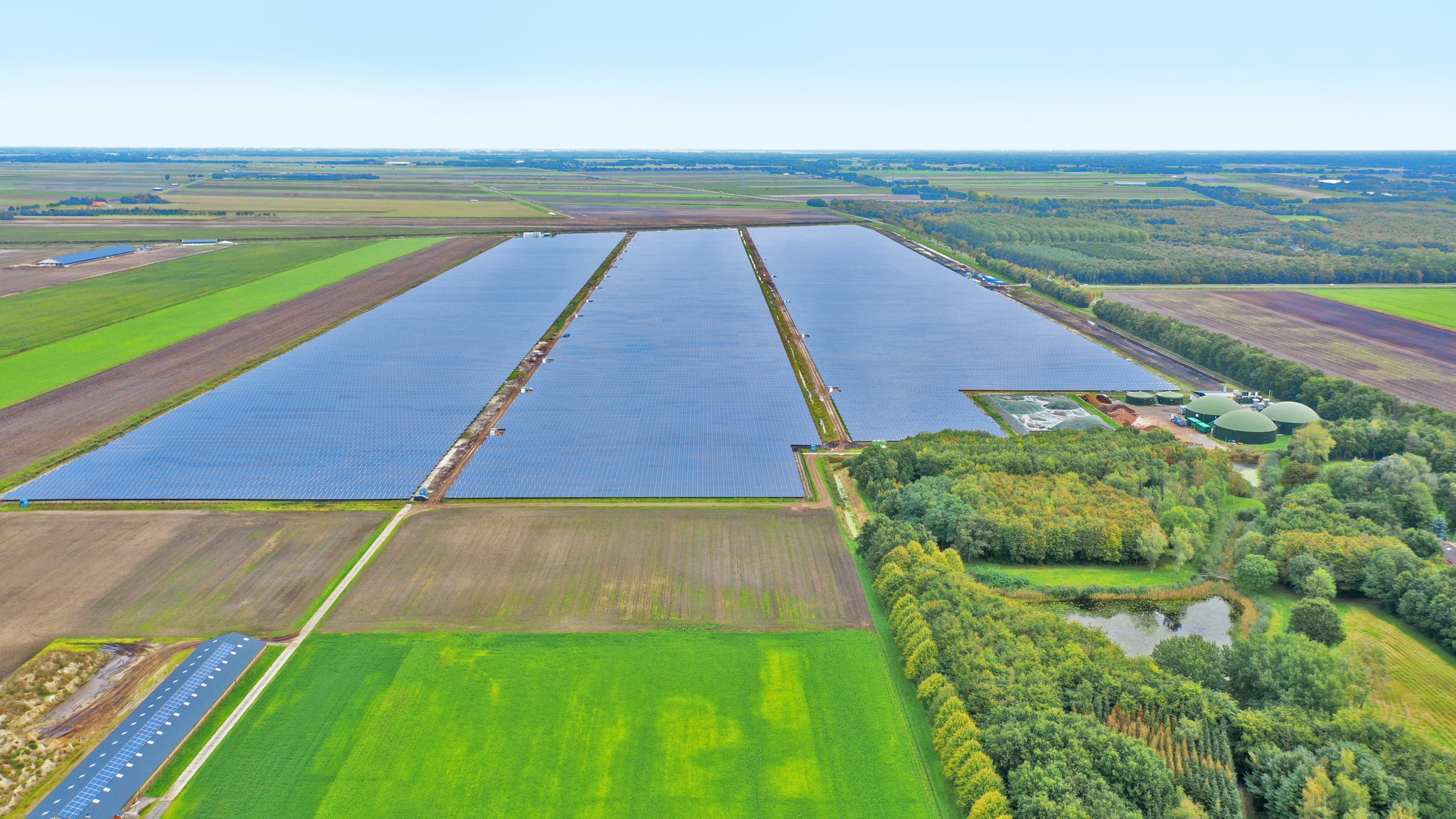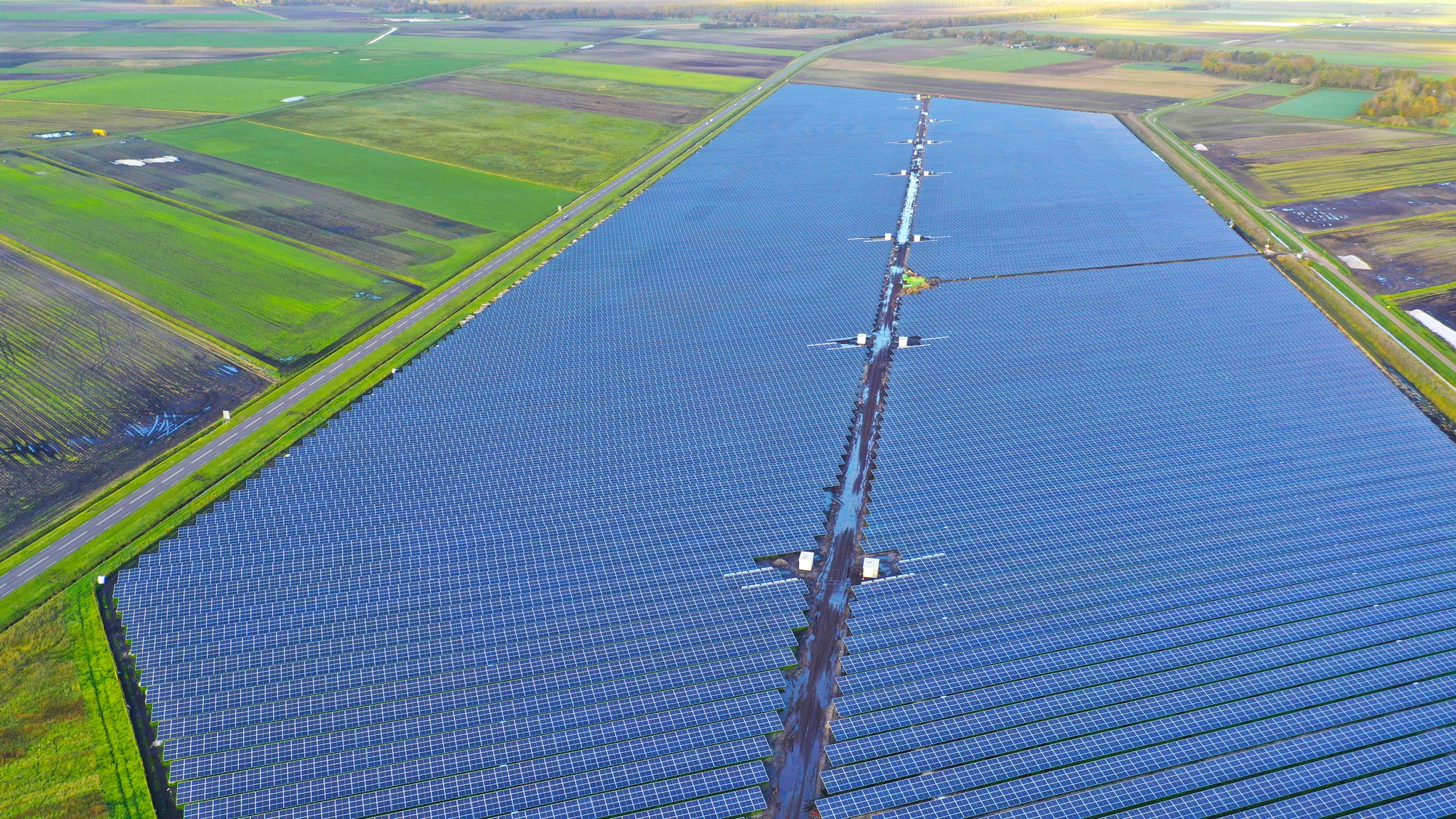PVTIME – Chint Solar Nederland has announced the successful completion of 3 solar parks in Drenthe and Groningen. Spread over the 2 provinces, 152 MW of solar panels have been installed. Zonnepark Stadskanaal has a capacity of 101 MW, Zonnepark Buinerveen of 45 MW, and Zonnepark Ommelanderwijk of 5.7 MW. The solar parks were connected to the grid of operators Enexis and TenneT.
The solar parks were initiated by PowerField and have been further developed and realized by Chint Solar. In addition to the solar parks themselves, Chint Solar also developed and constructed the grid connection infrastructure. In the implementation phase, Chint Solar acted as the leading EPC contractor, coordinated various subcontractors, and took responsibility for network integration and meeting all local and legal requirements.
Stadskanaal: 16 kilometer high-voltage cable route
The construction of Zonnepark Stadskanaal started in February 2020. Chint Solar installed 245,000 solar panels on 83 hectares of land at the Van Boekerenweg, along the provincial road N378. Chint Solar connected this solar park directly to the high voltage electrical substation of TenneT located in Meeden. To this purpose, a 16 kilometer 110 kv cable route was built between the solar park and the point of connection in Meeden.

Buinerveen: EMC limits
The construction works for Zonnepark Buinerveen started in May 2020. About 110,000 solar panels have been installed on 40 hectares of land. Zonnepark Buinerveen is connected to Zonnepark Stadskanaal via a 13-kilometer private medium voltage 33 kV cable route. The combined grid connection for the solar parks in Stadskanaal and Buinerveen is connected to the high-voltage grid. This is a first interconnection of two solar parks for the Netherlands. Thorough and long preparation was required, both concerning regulation and technology.
The technology and selection of components of Zonnepark Buinerveen were characterized by the high restrictions on the Electromagnetic Compatibility (EMC) directive applied to this geographical location. The EMC directive imposes limits to the electromagnetic emissions of equipment. In order to allow for the realization of the solar park, specific agreements had to be made with Astron (the Netherlands Institute for Radio Astronomy) that would guarantee the construction and operation of the solar park within the required norms. Chint Solar has therefore developed a project-specific DC filter and taken additional measures to limit the overall EMC emissions and stay within the imposed limits. The complex and customized EMC emission control solution was first tested in an external laboratory and subsequently on site.
‘The complexity of these projects makes them unique for Chint Solar, but also for the Netherlands’, says Sebastian John, Head of Project Management at Chint Solar Europe. ‘Meeting the 110 kV Requirements for Generators (RfG) Grid Code, reaching the agreed EMC limits and implementing the projects within the fixed time limit during the global COVID-19 pandemic makes these solar parks great references. We thank all partners involved for their remarkable efforts in advancing and realizing the projects.’

Ommelanderwijk: polluted soil
The construction of Zonnepark Ommelanderwijk, located between Veendam and Nieuwe Pekela, in the province of Groningen, started in July 2020. The former industrial estate was unusable for farming because of pre-existing pollution, and significant land remediation measures had to be taken prior to the construction of the solar park. In total, the solar park has 14,229 solar panels, half of which are monofacial (one-sided), the other half bifacial (double-sided). This will allow Chint Solar to test and prove the benefits of bifacial modules over monofacial in a real application in the Netherlands.
‘In these cases, solar energy is a perfect solution to use otherwise unusable land for valuable and sustainable energy generation’, states Mark van Rij, Head of Business for Chint Solar Nederland. ‘This type of land conversion can become a role model for other unusable locations. We want to copy this concept to other sites in the Netherlands.’











